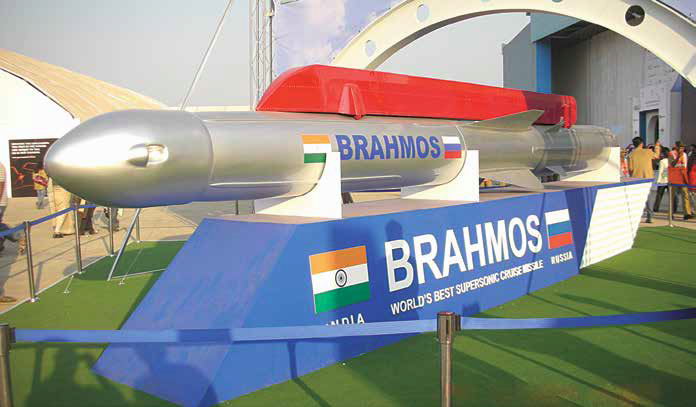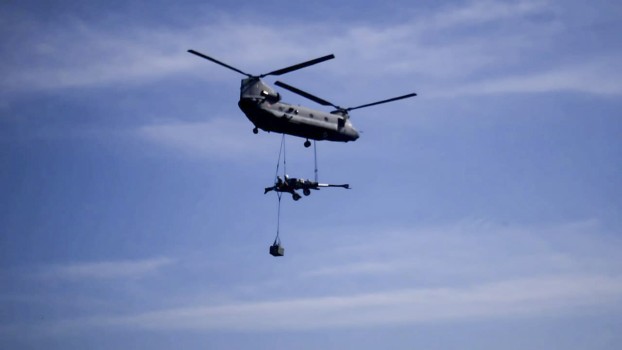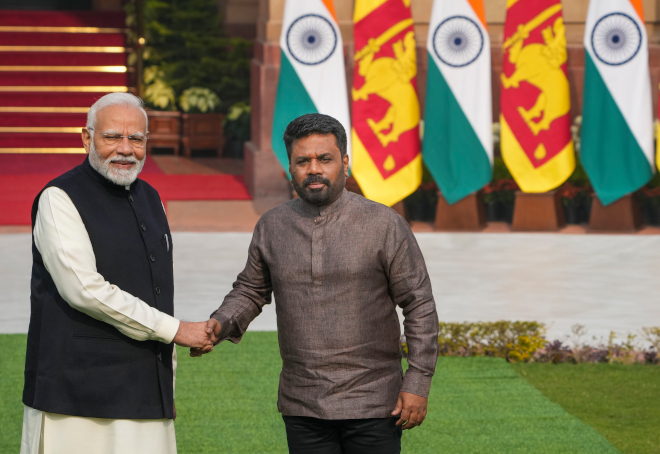
BRAHMOS supersonic cruise missile system. A file photo.
By exporting the BRAHMOS missile to Vietnam, India will not only gain considerable geopolitical leverage, prestige and user data, it will also help shed New Delhi's traditional reticence towards overseas military sales, writes Rakesh Krishnan Simha for GEOPOLITICS magazine.
India’s myopic attitude towards weapons exports has led to peculiar outcomes. In 1978, the Indian Army was looking to dispose of 100 outdated Centurion tanks. These tanks had performed brilliantly in the 1965 war with Pakistan and could have been donated to a friendly African country. According to an American government report, they were sold as scrap to a foreign company which was an intermediary of the racist South African regime. To New Delhi’s deep embarrassment, the South African military, which was facing an international embargo, refurbished the tanks and used them against Black Africans. In ‘India's Ocean: The Story of India's Bid for Regional Leadership’, David Brewster writes that in September 1986, Zimbabwe President Robert Mugabe requested India to deploy a squadron of MiG-21 aircraft with Indian Air Force (IAF) pilots to provide protection against the Apartheid regime in South Africa. Fearing it would get sucked into the African quagmire, India baulked. The following year, India refused to sell MiG-21s to Zimbabwe for the same reason. In the late 1980s Thailand requested India to supply Jaguar deep penetration strike aircraft that HAL was license producing for the Indian Air Force (IAF).
Since HAL was going to shut the Jaguar facility after completing the final order for the IAF, the Thai deal would have kept its production line humming for years. However, the government shot down the proposal in the belief that Thailand might deploy the aircraft against Vietnam, a friendly country. However, the Vietnamese military was several orders of magnitude more powerful than the Thai defence forces and a couple of Jaguar squadrons would scarcely have tilted the balance in Bangkok's favour.
The lack of a strategic culture, poor grasp of geopolitical realities and decision making paralysis in India's political leadership ensured that the country never quite got to exporting weapons. The government's pussyfooting over the export of BRAHMOS missiles, therefore, brings on a sense of déjà vu. For several years, India and Vietnam have been circling around a deal worth potentially hundreds of millions of dollars to provide supersonic cruise missiles to Hanoi. In August the Vietnamese media said India had delivered the system, but New Delhi poured cold water on the considerable excitement generated in India.
It is understandable why Vietnam is desperate seeking the BRAHMOS. The supersonic missile has been described as a "war winner" and "Brahmastra" by A Sivathanu Pillai, the founder of BrahMos Aerospace. In tests the world's fastest cruise missile has been known to cut warships in half. Its tremendous speed and accuracy give very little time to the enemy to take evasive action. Such destructive power and speed are unique in a nonstrategic weapon. Armed with the missile, Vietnam will gain an asymmetric advantage against the much larger Chinese People's Liberation Army Navy. It would leave Chinese warships and coastal assets highly vulnerable to a crippling missile strike.
Old habits die hard
India's reasons for holding back the BRAHMOS could be three-fold. One, the Ministry of External Affairs has a long-standing policy of not upsetting China even if the dragon cares little about Indian sensibilities. That is because Beijing is said to be ultra-sensitive about the introduction of modern weapons by its neighbours, the MEA, which remains a status quo seeker, is said to be vehemently opposed to the sale.
Leading strategist Bharat Karnad writes that in 1998 when he first suggested that India supply the BRAHMOS to Vietnam, the then Foreign Secretary K. Raghunath's rather dismissive response in his meeting with the National Security Advisory Board was that this was "not practicable" thing to do. According to him, it was "a phrase that has ever since remained etched in my mind and reflects the MEA's strategic myopia. In other words, China could arm Pakistan with nuclear missiles but for India to return the favour by equipping states on the Chinese periphery was not right. When Delhi fears even to do a strategic tit-for-tat, small wonder India has counted for so little for so long".
Secondly, BrahMos Aerospace may not have the spare capacity for fulfilling export orders. With all three branches of the military placing large orders for the BRAHMOS, exports may be overdoing it. The company is also in the process of testing the lighter BRAHMOS NG version for the Indian Air Force and is building the next generation extended range BRAHMOS which could see the missile able to hit targets 1000 km away (compared with 300 km currently). However, this assumption can be ruled out because BrahMos Aerospace would not be lobbying for exports if it didn't believe it couldn't meet the orders.
Thirdly, does the fine print in the agreement between India and Russia impose restrictions on exports? If this is an issue, then India needs to get the pact amended in step with current requirements. The Russian side needs to be convinced that they also stand to make a lot of money. Russian bureaucracy can be highly resistant to change, with Soviet-era officials having a penchant for stonewalling vital decisions.
On the bright side, the fact that weapon exports are being discussed at all in India is a quantum leap for a country that for decades wouldn't even contemplate the possibility of arming other countries. With a nationalist government in charge and the defence sector receiving a huge push from the Make in India policy, the situation is a lot different today.
Click to read the complete article
 Previous Article
Previous Article Next Article
Next Article













The Indian Air Force, in its flight trials evaluation report submitted before the Defence Ministry l..
view articleAn insight into the Medium Multi-Role Combat Aircraft competition...
view articleSky enthusiasts can now spot the International Space Station (ISS) commanded by Indian-American astr..
view article